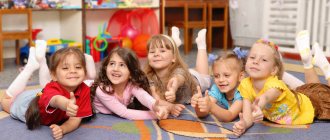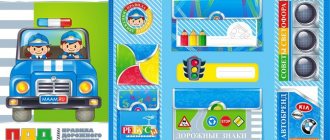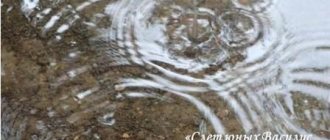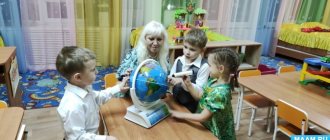Goals and objectives of environmental projects in preschool educational institutions
Project activities activate the cognitive and creative development of preschool children and form personal qualities. The goal of environmental education is the development of personality through the continuous accumulation of experience in communicating with the natural environment. The pupil independently accumulates experience and receives direction for further intellectual and social development.
Scientific conference as part of project activities
The teacher sets himself the task of forming:
- skills of search-cognitive, research activities;
- caring attitude towards the world.
The environmental project in the preparatory group differs in goals and forms of work.
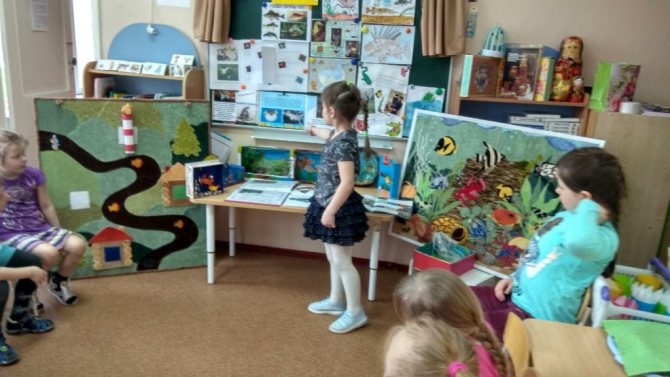
Project protection
Pupils aged 6–7 years have research experience and basic knowledge about the environment. More advanced ones can choose problems for projects on their own.
Organization of environmental projects
For environmental projects in different groups, it is preferable to choose topics related to the native land. Observations and experiments that are carried out in real conditions will bring more benefits than those that the child watches a video about or reads about in a book. The development of project activities goes through three age stages.
In younger groups
The beginning of the first stage refers to the age of 3–4 years. Search activity is natural for children. They explore the world, they are interested in everything. Starting from the age of three, they use this type of work as an environmental project. The leading role still belongs to the adult. Teachers usually choose practice-oriented, game projects. Environmental education begins with the immediate environment. Let the kids look at what flowers grow in their flowerbed and watch the insects. At 3–4 years old, any little thing encountered on the street is a discovery.
The theme "Native Trees" is suitable for this age group. As part of the project activity, kids will learn what deciduous and coniferous species grow in the yard. They will observe when the leaves appear, what color they are, and what happens to them in the fall. Different forms are used:
- an adult's story;
- conversation;
- excursion;
- observation;
- walk;
- Reading books;
- viewing photographs, pictures, reproductions;
- watching videos;
- acquaintance with folklore.
In a kindergarten setting, group projects are chosen for 3-4 year olds.
In middle groups
The second stage begins at the age of four. Students become more independent, and the goals of the project become more complex. Life experience does not yet allow one to show independence in choosing a problem; activity proceeds at an imitative-executive level.
Important! Students can act as “customers” of the project, asking questions of interest.
Forms and methods of research activity are moving to a new level. Work on the topic “Flora of my region” includes activities such as collecting a herbarium and compiling a photo album. Co-creation between children and adults is a mandatory component of the project.
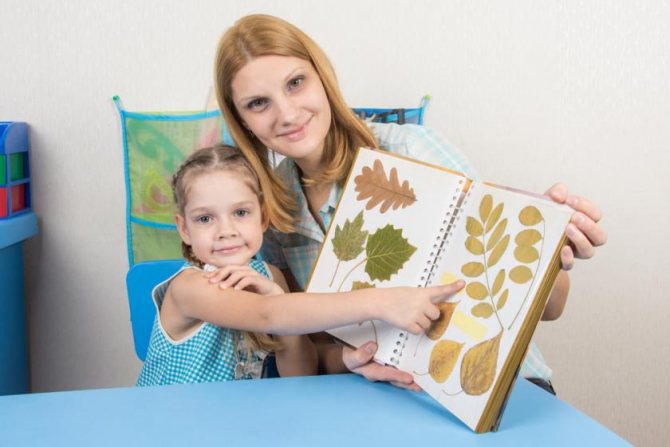
Family project
Pupils can engage in socially significant activities. They don’t just observe what flowers grow in the flowerbed, but they themselves plant a flower garden. Working on the theme “Our Flowerbed,” the kids get to know the flowers and choose which ones will grow in their area. Together with adults, they will sow seeds and wait for germination. The result is a beautiful blooming flowerbed that they will be proud to show to their friends and relatives.
Environmental education of preschool children
The study of spectral colors can be carried out in the form of a project activity by choosing the theme “Rainbow”. By the age of 4-5, kids should know the basic colors, this project will take them further. They will get acquainted with shades and learn what colors are obtained when mixing paints. During the work, they will become familiar with the concept of spectrum, learn poems and songs, and conduct scientific experiments.
For older groups
As they get older, social experience accumulates and students begin to cooperate with each other. It's time for paired projects. At the psychological level, noticeable changes occur: the ability to self-control appears, impulsive impulses become less frequent, and self-esteem develops.
The senior group uses different types of projects:
- research;
- creative;
- role-playing
Important! An environmental project in the senior group provides for organizational initiative on the part of students.
It is expected to develop the ability to find ways to solve a problem and develop the desire to use environmental terms in speech. The words “save the environment” are filled with meaning.
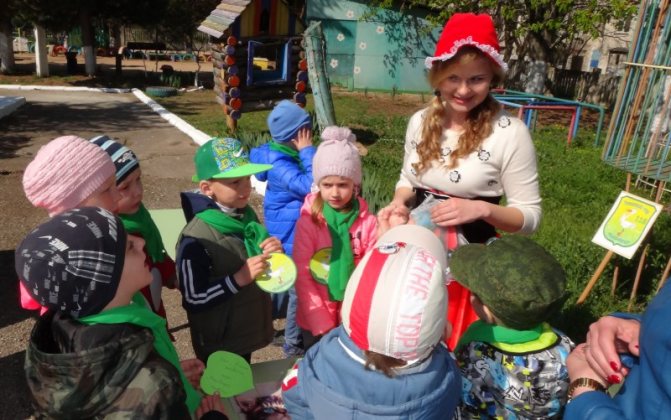
Excursion with Little Red Riding Hood
It would be appropriate to carry out the project “We are your children, Earth!” The teacher raises the problem of garbage in public places, explains why the forest is useful, what the “Red Book” is and what animals are listed in it. The planet takes care of earthlings like a mother, she feeds, clothes, gives warmth and beauty, and they must respond in kind.
In preparatory groups
The third stage of development of project activities refers to the preparatory group. It is characterized by a high level of interest, which is due to the development of cognitive abilities and personality traits. Adult activity gives way to support for children's initiative. An adult creates conditions for independent activity of pupils and organizes a cognitive space.
The ecology project in the preparatory group is of great importance for the development of the personality of students, as it involves the formation of ideas about the relationship between the natural environment and humans.
Note! Project activities have socially beneficial significance. Making bird feeders will allow you to feed the birds in winter. The plan may include events such as the release of leaflets, poetry readings, and a drawing competition.
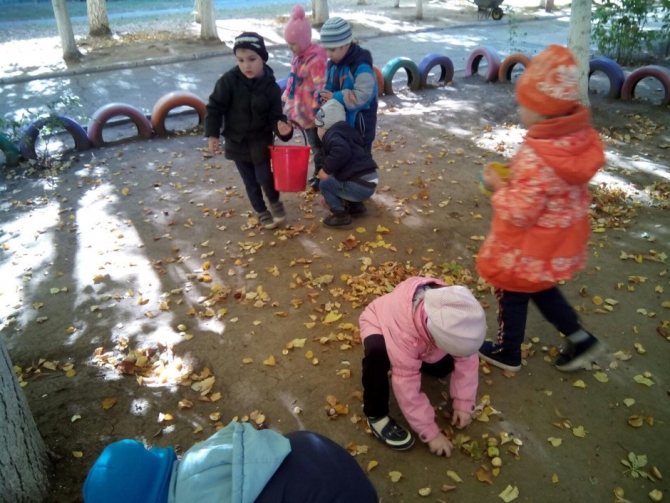
Ecological landing
The projects pay great attention to the scientific basis. You can touch on the following questions: where do microbes come from? What is the harm from sewage? What is ice? What are north and south?
Environmental education at school taking into account the Federal State Educational Standard
The result of project activities in the preparatory group should be the following:
- understanding the relationships in the natural environment;
- respect for the environment;
- development of basic environmental knowledge and culture of behavior;
- creation of a unified educational space for environmental education.
Types of environmental projects in kindergarten
Projects are divided into several types based on their duration. This takes into account the age of the participants and the problem being studied.
Short
Projects aimed at solving a small problem and not requiring a large investment of time are considered short-term. When developing a project on ecology in the senior group of a kindergarten, short-term in duration, you can turn to the topic “Spring-Wizard”. The goal will be to reveal the characteristics of the season through the integration of all educational areas:
- cognitive development (conversations, excursions);
- social and communicative (games);
- speech (memorizing poetry);
- physical (walking);
- artistic and aesthetic (matinees).
Note! For clarity, it is convenient to use presentations on the problem under study. Home project protection activities are encouraged in many kindergartens.
Long term
Researching a big problem takes a lot of time. It is better to implement them with older students who have the skills to work on the project.
You can invite the kids to work on the topic “Vegetable garden on the window.” The activities necessary to complete research tasks will take more than one month.

Planting onions
During the work, students will gain new knowledge about cultivated, wild, and medicinal plants. They will develop skills in caring for seedlings, they will develop observation skills and a sense of responsibility.
Network projects
The relevance of Internet projects is dictated by the development of digital technologies. The project, launched online, makes it possible for an unlimited number of students, teachers, and parents to connect to solving the problem. Theme: “The globe, for me you are a dear face!” provides many solutions, it will be correct to solve the problem on a large scale.
The practice-oriented significance of events is increasing. This form of work makes it possible to create the basis for a new model of environmental education, which is the environmental movement. There is an opportunity to see your institution against the background of other organizations.
Environmental research project at the preschool educational institution “Living Seeds”
- June 9, 2016
Competition “Methodological piggy bank of a teacher - 2016”
Nomination “Methodological piggy bank of a preschool teacher”
As part of the project, children become more familiar with the sequence of growing fruit plants and flowers. Thus, children learn the principles of cause-and-effect relationships in the nature of the plant world. They learn to understand that for growth and development it is necessary to create certain conditions (sufficient soil, moisture, light, heat, etc.). Learn about the beneficial qualities of certain plants.
By dominant activity: research, practice-oriented.
By the number of participants: group, children of the preschool group of MBOU Secondary School No. 1 in the city of Kedrovoy, Tomsk Region.
Duration: long-term, (I stage: March – October “Vegetables and cereals”, II stage: November – February “Trees and shrubs”, III stage: March-May “Flowers”).
Project Description
As part of the project, children become more familiar with the sequence of growing fruit plants and flowers. Thus, children learn the principles of cause and effect relationships in the nature of the plant world. They learn to understand that for growth and development it is necessary to create certain conditions (sufficient soil, moisture, light, heat, etc.). Learn about the beneficial qualities of certain plants.
Explanatory note
One of the priority tasks of the national educational policy is environmental education of children and youth. The younger generation must understand that by preserving natural diversity, they are preserving the future for themselves.
A preschooler, in joint activities with teachers and parents, is ready to perceive environmental problems, and with the help of project activities we can teach him to look for ways to solve (implement) these problems.
Conditions of implementation. The environmental research project “Living Seeds” is conceived as an additional measure of environmental education for children of senior preschool age. The project is planned to be implemented in the period March-May 2016.
The following activities are envisaged within the framework of this project:
- consultation for parents in the form of a written request, where parents receive instructions on how to prepare a presentation of a mini-research about the selected plant;
- The group space, for the duration of the project, is replenished with such zones as a mini-museum, an experimental zone, and a selection of literature about plants;
- During the project, a thematic folder is collected (herbarium folder, consisting of pages that children prepared together with their parents. Thus, the collected collection of folders is used in the future as educational material;
- At the final lesson, we summarize the project and the children present their mini-projects about one of the plants to the whole group.
The problem that the project aims to solve. Children have partial or no idea at all about the sequence of growth of fruit crop plants (about the stages of growth, about the rules of caring for seedlings). Drawings on the topic “Vitamins grew in the garden beds” clearly showed the poor understanding of many children about the growth, development and fruiting of vegetable crops.
Relevance of the project. As part of the project, children become more familiar with the sequence of growing fruit plants and flowers. Thus, children learn the principles of cause and effect relationships in the nature of the plant world. They learn to understand that for growth and development it is necessary to create certain conditions (sufficient soil, moisture, light, heat, etc.). Learn about the beneficial qualities of certain plants.
Methodology of the “three questions” model.
- What do we know? That plants are formed from seeds, that fruits contain seeds (diagnosis of children’s knowledge at the beginning of the project).
- What do we want to know? Why do some seeds produce vegetables, while others produce, for example, cereals and wheat? Why can some plants be grown in an open-air garden, while others can only be grown in a greenhouse or at home?
- How do we find answers to questions?
Stages of work on the project:
- Organizational stage: collection of information, selection of visual and practical material.
- Planning stage: planning practical and theoretical activities.
- Practical stage: implementation of the plan.
- Final (final) stage: final lesson, project products - herbariums. What have we learned? Diagnostics of children’s knowledge at the end of the project (questionnaire sheet, individual checklist of the pupil’s achievements, results assessment system).
Goal : Encourage preschoolers to explore the process of growing plants from seed to fruit. Through observation, experiment, analysis, preparation of reports about one of the vegetable crops.
| Tasks | Expected results |
| Educational. To acquaint children with the peculiarities of cultivating various plant crops | Children are able to talk about the progress of the project and the features of growing different vegetable crops |
| Developmental. To promote the development of an understanding of the cause-and-effect relationships that arise when caring for plants | Children reason by answering the question “What comes first, what comes next?” |
| Educational. Foster hard work and a desire to achieve results from your work | Children show persistence in achieving their goals. |
| Result | Product |
|
|
Stages of work on the project
| Content | date | Necessary | Target |
I. Preparatory
| March I – II week | Methodological literature, developments in valeology. | Assess and systematize the amount of information for preschoolers. Identify the problem that the project aims to solve. |
Planned
| March III – IV week | Indicate the scope of work to be done on the project. | |
II.Organizational
| April II – III week |
| Ensure project implementation. |
| April May | Camera or video camera. | Implementation of the project plan. |
| May |
| Drawing up a complete analysis of the project implementation. |
Resources and Sources
| Resource category | Resource name | Sources |
| Human Material Information | Pupils of the preparatory group for school and their parents. Group teacher. Toy - Chippolino, a cartoon about the adventures of Chipolino, a book, photographic materials (camera), pictures of the subject, plot. Tools for caring for plants, small toys for decorating the experimental zone “Vegetable Garden” and a mini-museum, loops, cards with a carved surface, products (natural and non-natural); Cards depicting human facial expressions, personal hygiene items. Special literature, fiction, Internet. Children's encyclopedia about the plant world, magazines “Preschool Education”, “Child in Kindergarten”, RED BOOK. | Own resources |
Results evaluation system
| № | Criteria | Indicators in points |
| 1 |
| 2 |
| 2 |
| 2 1 0 |
| 3 |
| 2 1 0 |
| 4 |
| 2 1 0 |
| 5 |
| 2 1 0 |
| 6 |
| 2 1 0 |
| 7 |
| 2 0 |
| 8 |
| 2 0 |
| 9 |
| 2 0 |
Plan - project implementation schedule
| Date and place in the regime moments | Collaboration between teacher and children | Collaboration between parents and children | Free creative activity | Purpose and expected result |
| 12.02. II p/d Practical work | Planting greens and onions | Watering seedlings | Create an experimental research zone “Vedgetable Garden” | |
| 14.02. I p/d ECD for familiarizing yourself with the environment “Living Seeds” | Game, theatrical performance, slide presentation, situational conversation, modeling | Monitoring the growth of plants in the “Vedger Garden” | Introducing children to the topic “Living Seeds” | |
| II p/d Conversation “Roots and Fruits” | Teacher's story, slide presentation, theatrical game | Reviewing books about the plant world | Expanding children's horizons in understanding cause-and-effect relationships in nature | |
| II p/d Introduction to the Observation Diary | Completing page 1 of the diary: observing the growth of onions | Preparation for the exhibition “From Seeds to Fruits” (herbarium production) | D/game “What first, what then?” | Learn to record the results of observations |
| II p/d Conversation “From seeds to fruits” | Working in the Diary. Sketches on page 2 | Role-playing game "Vegetable shop" | Strengthen knowledge about vegetables | |
| 15.03. II p/d "Flower seeds" | Planting flower seeds for seedlings | Watering seedlings | Compare vegetable and flower seeds. Answer the question “Is it possible to determine from their appearance what will grow out of them?” | |
| 18.03. I p/d GCD the world around us | “Plants are the lungs of the earth” (slide presentation) | To foster environmental awareness in preschoolers | ||
| II p/d Work in a mini-museum | Work in observation diaries, page No. 1 | Examination of the exhibits of the mini-museum, changes in the “Vegetable Garden” zone, | Recording observation results | |
| 19.03. GCD (speech development) | "Fruits and Seeds" Quiz | Preparing for the exhibition: making a herbarium of vegetable crops | S/r game “Grocery Store” | Consolidation of acquired knowledge |
| Work in the "Vegetable Garden" zone | Observing the growth and development of flowers and greenery | Watering seedlings, weeding, loosening | Foster a desire to care for living nature | |
| Play activity | Game-dramatization based on the fairy tale by J. Radari “The Adventures of Cipolino” | Develop artistry and communication skills | ||
| Working in observation diaries | Filling out diary pages | Recording observation results | ||
| 19.04. GCD dedicated to World Earth Day | “The earth is our common home” | Preparing children (memorizing poems about the Earth, nature and man) | Making attributes and props for the lesson | Summarize children's environmental knowledge. Foster respect for nature |
| May | Observations in nature of changes in climatic conditions for planting flowers in flower beds | Planting flower seedlings in flower beds | Note weather conditions and determine the possibility of planting seedlings in a flower bed | |
| Working in observation diaries | Assignment for the summer holidays: take several photographs of how children help plant, care for and harvest crops in the garden | |||
| September Conversation | Repetition of the theme “Living Seeds” | Consolidation of knowledge and testing of knowledge, skills and abilities | ||
| Organization of the exhibition “Happy Harvest” | Preparation for the exhibition (decoration of vegetable crops grown in your own garden bed) | Exhibition design jointly by teacher and children | Demonstration of work results | |
| October "Wonders of Autumn" | Autumn holiday | |||
| 25.01. "Happy Harvest" | Final lesson on the project | Summarize the knowledge acquired by children in the process of implementing the environmental research project “Living Seeds” |
Used Books:
- Kauka R. Misha the Bear. Discovering the world: A manual for play-based preschool education./Trans. with him. M.V. Medvedeva. – M.: EKSMO, 1996.
- Volchkova V.N. Stepanova N.V. Lesson notes for the senior group of kindergarten. Ecology. Practical guide for educators and methodologists of preschool educational institutions. – Voronezh: Shopping Center “Teacher”, 2004.
- Aspiz M.E. Various secrets/Hud.A. Panin. – Det. Lit., 1988
- Flora in pictures. – M.: Russian Encyclopedic Partnership, 2004. (episode “Getting ready for school”)
- Nikolaeva S.N. Methods of environmental education in kindergarten: working with children in the environment. and Art. groups of children garden: book. for kindergarten teachers garden / S.N. Nikolaev. – 6th edition – M.: Education, 2006. (Preschool World)
Author: Project manager Irina Nikolaevna Matveeva, teacher of the preparatory school group at Municipal Budgetary Educational Institution Secondary School No. 1, Kedrovoy, Tomsk Region.
Materials for environmental projects taking into account the Federal State Educational Standard
Modern requirements for environmental education include the search for new forms of work. Kindergartens develop projects based on existing programs. We can recommend the partial program of T.V. Potapova “Hope”. In the course of work, the concept of “loving nature” should be supported by the skills of caring for the environment.
Programs of social-ecological, aesthetic-ecological orientation such as “Young Ecologist” by S. N. Nikolaeva, “The World Around Us” by T. I. Popova, “We are Earthlings” by N. N. Veresova, “The Planet is Our Home” I.G. Belavina and N.G. Naidenskaya give a good start for developing their own projects.

Creative project “Red Summer”
The formation of a conscious attitude towards the natural environment should be started from preschool age. The inclusion of pupils in active interaction with the outside world influences the formation of such personality qualities as responsibility for tomorrow, for their homeland and family.
Senior group. Senior preschool age. Children 5-6 years old
Environmental education project “Save the forest from fire” for senior and preparatory groups
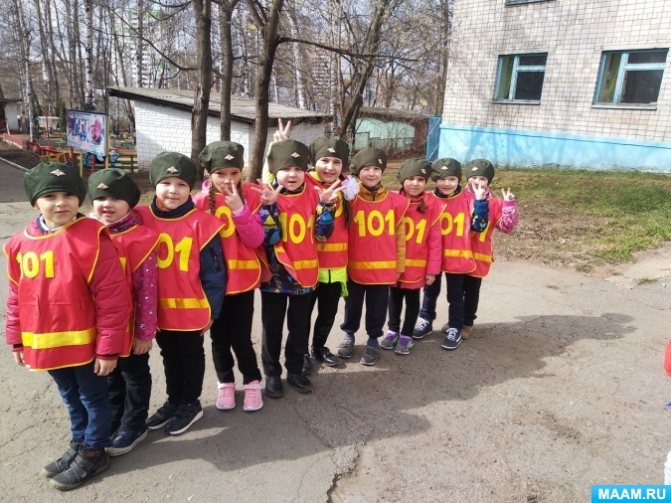
Project participants : children of senior and preparatory groups, parents, group teachers Updating the topic “Take care of the Earth.
We did not inherit it from our grandfathers. We borrowed it from our children” (Kenyan... Pedagogical project “Basics of safe behavior of preschoolers in nature” for children of senior preschool age “From how childhood passed, who led the child by the hand in childhood, what entered his mind and heart from the world around us - the kind of person today’s baby will become depends on this to a decisive extent." V.A. Sukhomlinsky Pedagogical project Topic : "Fundamentals of safe behavior...
